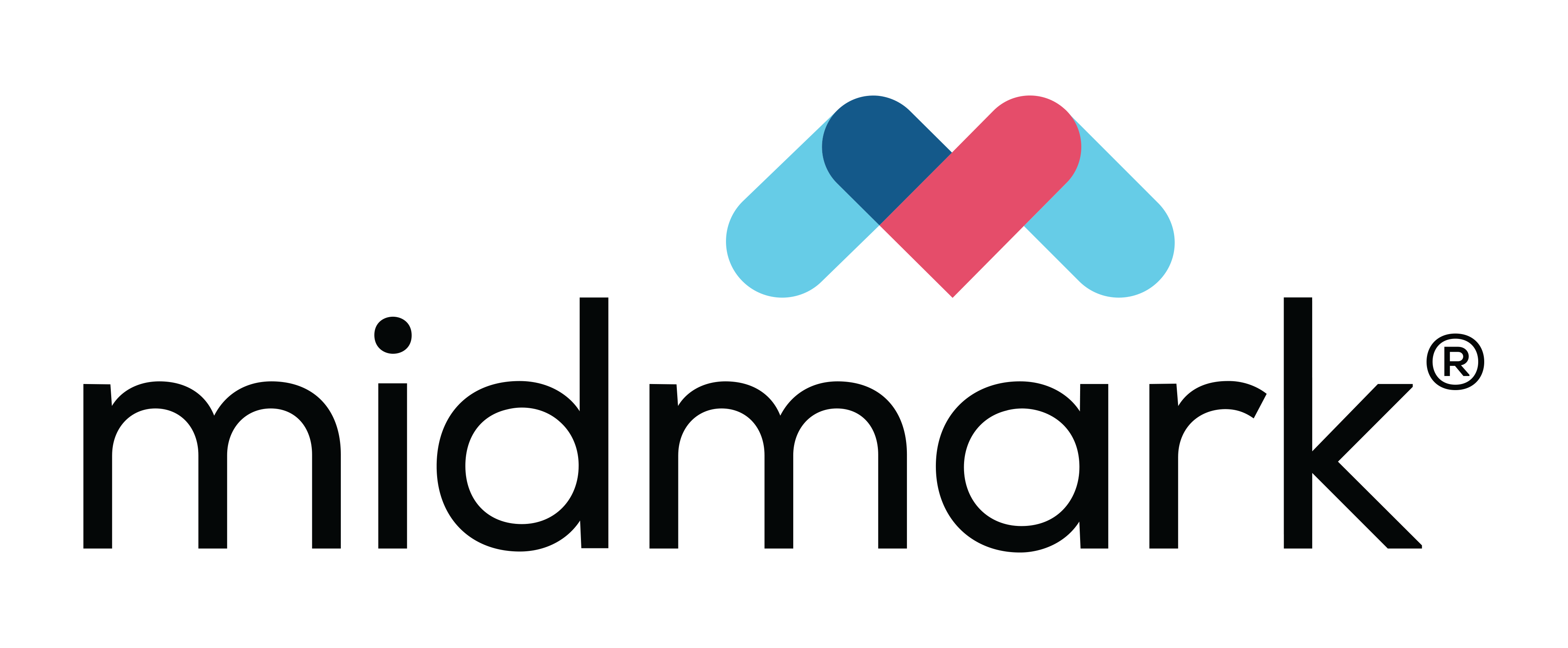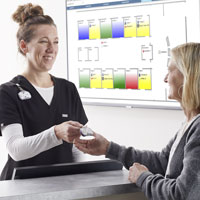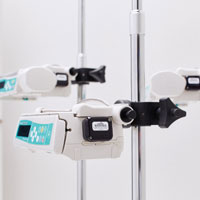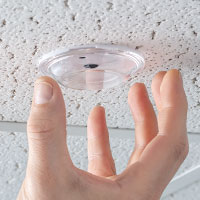From Crisis to Comfort: Real-World Impacts of RTLS-EMR Integration

10/28/2025
A Moment That Matters
The emergency department doors slide open and Alex stumbles in, pale and anxious. His wife clutches his arm, worry etched across her face. In these moments, every second feels heavy.
But while Alex and his wife can’t see it, a quiet network of technology has already begun orchestrating the care around them. Midmark CareFlow™ RTLS and Epic EMR are working together—removing friction, eliminating delays and freeing the care team to do what they do best: focus on Alex, not logistics.
Arrival and Triage: Technology That Sees What Clinicians Can’t Stop to Document
When Alex arrives at registration, he is assigned a real-time locating system (RTLS) badge that allows Epic to timestamp his patient journey, creating a digital trail that minimizes the time caregivers need to stop and document. The Midmark RTLS badge ID is entered directly into Epic ASAP, allowing Epic and CareFlow to automatically exchange applicable patient data.
As the triage nurse gently guides Alex into the exam bay, her focus stays on his symptoms—not a screen—because behind the scenes, a powerful chain reaction has already begun. As he moves into the triage bay and then to the waiting area, CareFlow silently sends his new location to Epic, creating a timestamp in the EMR to start documenting his wait time without anyone stopping to manually update Alex’s location.
While Alex waits, an agitated patient nearby raises concern. A staff member presses the discreet duress button on their Midmark RTLS badge. Security arrives within moments, guided by a real-time alert in CareFlow Staff Duress, indicating who needs help and where. The situation de-escalates swiftly—no shouting, no panic and most importantly, no disruption to patient care.
For executives, this is safety. For clinicians, this is peace of mind.
The Exam Room: Eyes on Alex, Not the Keyboard
When Alex is brought to an exam room, the CareFlow RTLS EMR Interface to Epic automatically marks him as admitted to the ED based upon his presence in the room. His physician enters the room wearing a Midmark RTLS badge, and the system silently notes her presence and begins the exam record. Epic automatically assigns the physician to the patient’s treatment team and marks the exam in process. When the physician exits the room, Epic marks the exam as complete.
There is no pause to update the patient’s location in Epic, no break in eye contact. Instead, she greets Alex by name, kneeling to his level, asking about his pain. The technology works quietly in the background, so she can be fully present.
When documentation depends on manual updates, it’s often incomplete, delayed or inaccurate. With automated tracking through CareFlow RTLS and ASAP, every patient movement is captured in real time—creating a trustworthy record without extra effort.
For executives, this means reliable insights into wait times and throughput, free from human error or after-the-fact updates. For providers, it means fewer clicks and less cognitive load, allowing them to stay focused on what matters most: patient care.
Diagnostics: Bringing Answers to the Bedside
As test orders fire off in Epic, technicians find Alex instantly through the RTLS-powered patient location view. Mobile EKG, labs and X-ray can arrive at his side, not the other way around.
Emergency Surgery: Real-Time Clarity When Every Second Counts
When Alex’s care team determines he needs emergency surgery, the pace quickens—but the sense of control never falters. As he’s wheeled toward pre-op, the location change is automatically timestamped and displayed in Epic OpTime, showing his care team that he has entered the pre-op area and triggering a cascade of operational readiness. Nurses prepare, the anesthesiologist reviews his chart and the OR team gets the room ready—without anyone stopping to make phone calls or track him down.
When Alex enters the operating room, his status in OpTime seamlessly updates to “In Room,” giving the care team real-time visibility on what’s happening with the patient. From that moment forward, Epic uses RTLS location data to automatically timestamp each milestone of his surgical journey, including:
Similarly, when staff wear Midmark RTLS badges, location messages from CareFlow trigger OpTime to automatically add staff to case documentation.
These updates happen passively, initiated simply by the movement of Alex and his care team through the surgical pathway—no extra clicks or documentation required.
And in the waiting room, Alex’s family watches the HIPAA-compliant OpTime status board for updates in real time—relieved to see each new milestone appear: In Pre-Op. In Procedure. In Recovery.
This visibility eases their fear, while sparing desk staff from a flood of questions and nurses from frequent status calls.
Real-time visibility means families feel reassured, and clinicians stay focused on care.
Med-Surg and Recovery: One Step Ahead
When Alex is wheeled up to Med-Surg, Epic already knows based on a location message from CareFlow RTLS. He is transferred automatically in Epic Grand Central, while the bed status also updates. His nurse logs in and sees him on her list immediately—ready to assess, not waiting for the charge nurse to make a manual bed assignment.
The IV pump in the room is tagged with RTLS, so Epic is aware that the equipment is in the room and suggests that the nurse associate the pump to Alex. This update also removes it from Epic’s list of “available” equipment on the unit. And when Alex’s nurse needs a sequential compression device, she searches for available SCDs on the unit right within Epic.
As Alex recovers from his surgery, he uses MyChart Bedside to stay informed about his care team and treatment plan. While reviewing his care plan, a nurse enters the room and her credentials automatically pop up on the tablet, putting his mind at ease knowing they are part of his care team.
As Alex rests in recovery, the incoming nurse begins her shift by quickly reviewing his record to see whether the provider has already completed the post-surgical visit. With Grand Central, she can immediately locate the provider on the map and connect in person to discuss Alex’s care plan—eliminating guesswork, saving time and ensuring seamless coordination.
This is operational efficiency that patients feel as compassion.
Discharge and Beyond: A Lasting Impression
When Alex is ready to go home, his nurse places his RTLS badge in the Midmark RTLS Drop Box, which in turn triggers Epic to automatically discharge Alex in the EMR. It also initiates the entire room turnover process in Epic—all without a single manual action in the EMR.
The bed status is changed to “dirty,” at which time EVS is notified via Rover. Because the EVS cleaning cart is tagged with RTLS, the bed status is marked as “cleaning” upon entry, and when the cart exits the room, the bed status is marked as “ready.”
Weeks later, when Alex completes his HCAHPS, his responses reflect what he experienced: a team that seemed always ready, always present, never rushed. A system that worked for them, not against them thanks to the wide range of capabilities the CareFlow RTLS Interface to Epic brought to staff coordination and efficiency at each phase of his journey.
Alex never saw the CareFlow-Epic integration working—but he felt its impact in every calm interaction, every short wait and every reassuring smile from a nurse who was fully present rather than focused on a screen.
For healthcare leaders, this integration represents something powerful: a way to reduce clinician burden, increase the accuracy of documentation, strengthen safety and deliver a more seamless, human-centered patient experience.
Ready to Transform Care Delivery?
Epic, ASAP, Rover, OpTime, Grand Central, and MyChart are trademarks or registered trademarks of Epic Systems Corporation.
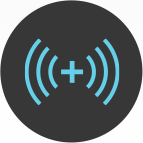
 Nurse Call AutomationAutomatic call cancellation to lighten the nurse workload and give more time back to the patient care experience.
Nurse Call AutomationAutomatic call cancellation to lighten the nurse workload and give more time back to the patient care experience.
 Staff SafetyDiscreet, accurate and real-time alerts through a wearable duress button that helps provide an efficient response and protect staff against workplace violence.
Staff SafetyDiscreet, accurate and real-time alerts through a wearable duress button that helps provide an efficient response and protect staff against workplace violence.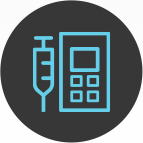
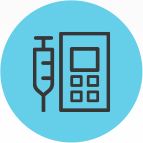 Asset TrackingIn-the-moment equipment locating to support safe and timely patient care and controlled costs.
Asset TrackingIn-the-moment equipment locating to support safe and timely patient care and controlled costs.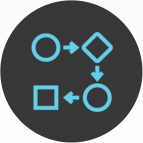
 Patient FlowEnhanced communication designed to optimize operations, enrich patient experiences and improve staff satisfaction.
Patient FlowEnhanced communication designed to optimize operations, enrich patient experiences and improve staff satisfaction. AnalyticsDerived from actionable insights at your fingertips, accurate location information drives informed decision making.
AnalyticsDerived from actionable insights at your fingertips, accurate location information drives informed decision making. Contact TracingQuick, accurate information at your fingertips for your contact tracing efforts.
Contact TracingQuick, accurate information at your fingertips for your contact tracing efforts.
 Temperature MonitoringA partnership of best-in-class solutions, available through an interface with Primex environmental monitoring.
Temperature MonitoringA partnership of best-in-class solutions, available through an interface with Primex environmental monitoring.
 InterfacesA seamless architecture that exchanges data automatically between your RTLS and other enterprise applications in real time.
InterfacesA seamless architecture that exchanges data automatically between your RTLS and other enterprise applications in real time.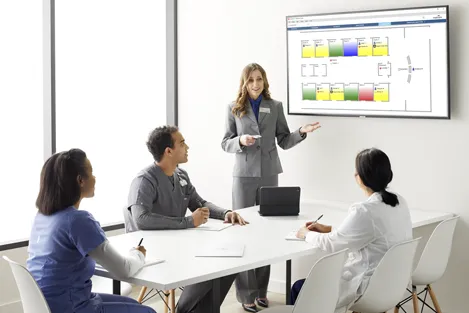

 RTLS System Integrator ResourcesDiscover our library of sales and marketing resources.
RTLS System Integrator ResourcesDiscover our library of sales and marketing resources. Case StudiesSee how we’ve helped our customers design better, more efficient care.
Case StudiesSee how we’ve helped our customers design better, more efficient care. White PapersEmbrace innovation in your health system with thought leadership.
White PapersEmbrace innovation in your health system with thought leadership. Webinars + PodcastsListen to the latest from Midmark RTLS here.
Webinars + PodcastsListen to the latest from Midmark RTLS here.
 BlogThink differently and solve problems with new ideas to enhance patient care.
BlogThink differently and solve problems with new ideas to enhance patient care. Published PerpectivesChange is a constant in healthcare—and we’re leading the way. Read our recent bylines and articles.
Published PerpectivesChange is a constant in healthcare—and we’re leading the way. Read our recent bylines and articles. InfographicsLet us show you the whole picture with real-world applications.
InfographicsLet us show you the whole picture with real-world applications. RTLS Press ReleasesFind out what’s happening at Midmark RTLS. View the latest news about Midmark RTLS and the healthcare industry.
RTLS Press ReleasesFind out what’s happening at Midmark RTLS. View the latest news about Midmark RTLS and the healthcare industry.
